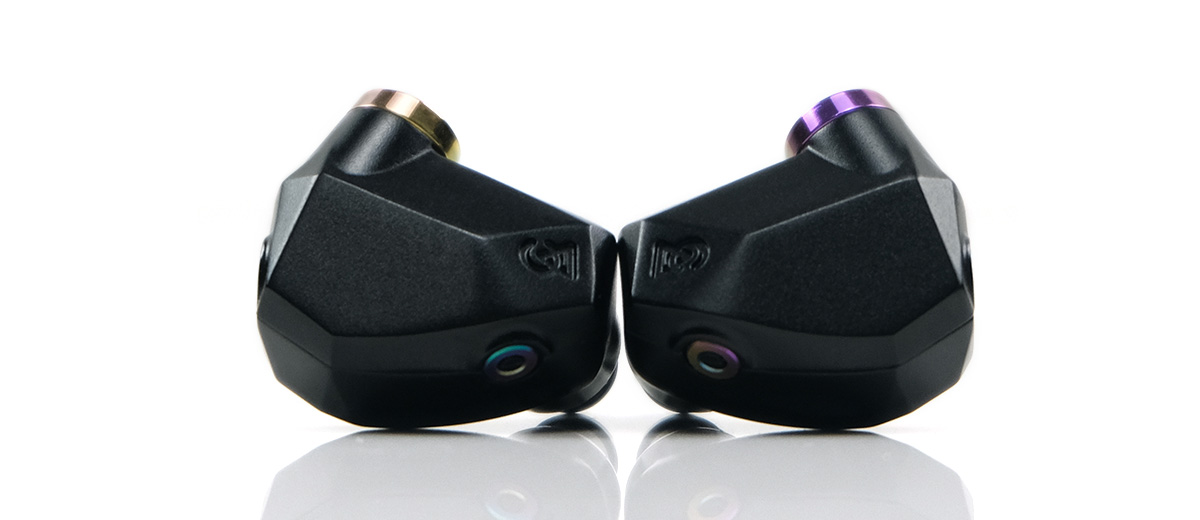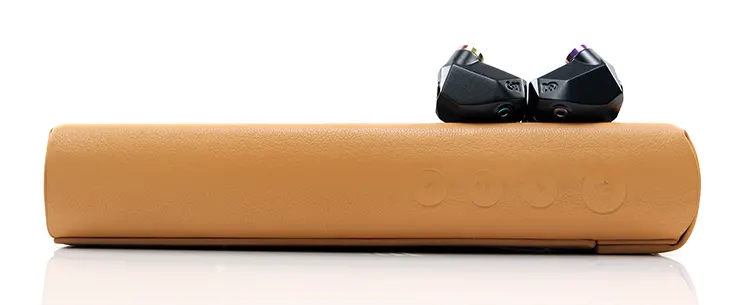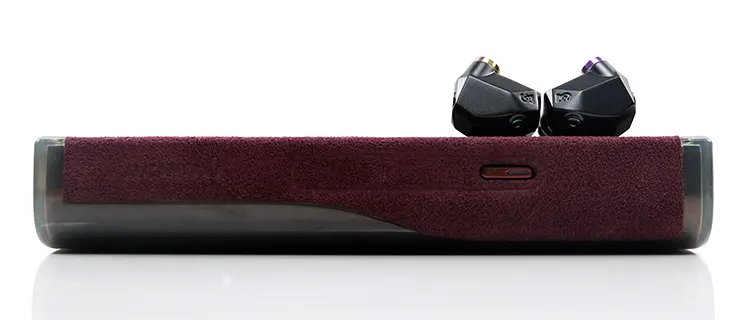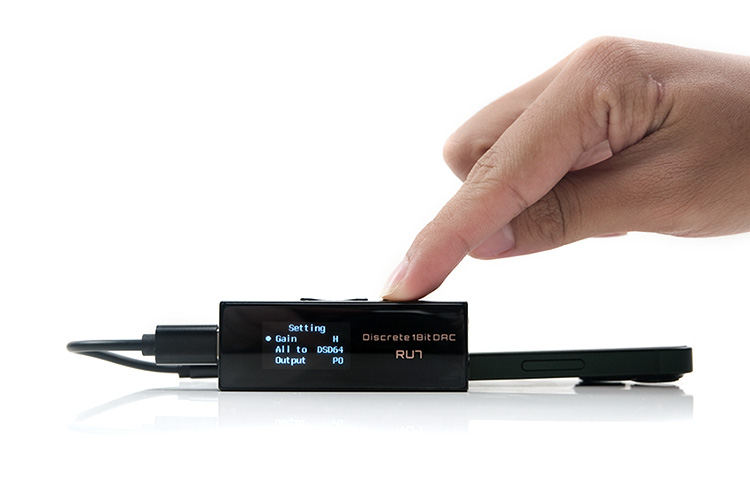Sound Impressions
The following sound impressions of the Campfire Audio Fathom stock wide bore single flange silicone tips were completed using a mixture of the HiBy R8 II, the Cayin N7, and the FiiO M15s on their respective balanced 4.4mm outputs.
Summary
The Fathom is the more natural and slightly warmer-sounding cousin of both the Andromeda 2020 and the Ara.
You can read the precise differences in more detail on page 3 of this review but the TLDR is a weightier low-end with more warmth and richness reaching into the mids and a lifted and more prominent vocal presence to balance it out.
The presentation is topped off by a more evenly-tuned treble delivering more upper-mid energy than the 2020 tuning but less dominant compared to the Ara.
There is just a slight low-end bias by 1-2 dB over the vocal presence at its highest dynamic peak but otherwise, when compared to the more explosive hybrid alternatives in CA’s line-up, there is very little ‘out of whack’ from this performance.
For those new to Campfire Audio IEMs, the Fathom is a very balanced and relatively smooth-sounding BA tuning perfect for mid-tempo standards or more delicate and detailed recordings.
For bassheads, the Fathom is not for you. I suggest you turn to the likes of the Trifecta, the Supermoon, and the Bonneville if you want power and depth.
Nevertheless, I do find the bass from the Fathom to be more satisfying than the previous all-BA Campfire creations. There is a noticeable difference in both weight and bloom over the leaner Andromeda 2020 and Ara performance.
In turn, that colors the mids with a more natural-sounding hue, helped along by some excellent separation. If you have been reading the last 13 years of my reviews you will probably have guessed by now that I am a vocal enthusiast.
That means I am delighted to hear the Fathom’s dual Sonion drivers churn out some fuller-sounding vocals with a little bit more treble overtone from the Tweeters compared to the Andromeda 2020’s more relaxed positioning.
Frequency Response
I think Campfire nailed Fathom’s FR, both in terms of how balanced it sounds and how close it comes to matching their desired aims of the tuning.
Yes, it is a dual BA woofer for the lows so it’s not exactly titled towards sub-bass power quite like some of their dynamic driver offerings. However, the 20-200Hz bass shelf is quite elegantly done with smooth elevation and subsequent dive down to its lowest point at around 800Hz to 1k which doesn’t sound too abrupt.
The 1-2k region is lifted with both instrument and vocal sounding focused and to the fore though not overly so. I would say the bump is closer to the Ara tuning than the Andromeda 2020’s more relaxed 1-2k alternative.
The Fathom’s 2-6k is much more balanced compared to either of the aforementioned monitors. There is very little in the way of noticeable bumps or dips with a treble enhancement more noticeable in the 7-10k region.
Previous BA offerings from CA have had this upper-treble bump before. However, the Fathom’s better bass weight and enhanced mids timbral warmth counters it better so the overall tuning is not as treble titled or as bright and leaning sounding as before.
Timbre
Oh, easily the best timbre from a Campfire Audio BA monitor to date. I did describe it as smooth at the offset but it’s not a smoothed-over performance if that makes sense. The clarity is very much there courtesy of some refined and articulate-sounding upper-mids and lower treble tuning.
That improved treble tuning creates a gorgeous balance of warmth and sparkle though with perhaps a slight bias of even over odd harmonics but it’s not overly tilted one way or the other.
Vocals still have a layer of treble ‘sheen’ that gives the notes some much-needed bloom and definition to go along with the lower-order warmth and presence.
Yes, the Fathom lacks a strong dynamic driver-type of fundamental with the dual woofer more of the punchy variety. That being said, coming from the Ara and Andromeda there is more of in both weight and extension meaning the Fathom sounds more authoritative than either for bassier recordings.
The instrumental timbre is more natural and fuller sounding than what I have previously heard from Campfire Audio BA monitors. Not a thick tone but you have to bear in mind I primarily use the stock wide-bore silicone tips so if you switch to the foams they will sound smoother and richer.
The silicone tips deliver a more immersive and dynamic performance for me compared to the foam tips which I found to just suck a bit of energy and ’emotional connection’ from the Fathom’s presentation. I suspect the foam tip’s comparative attenuation in the highs creates that perception.
Staging & Dynamics
Impeccable imaging and resolution from the Fathom, though unsurprisingly, is less about depth and power and more about placement, especially in terms of instrumental separation and vocal positioning.
I do believe the sense of depth and dynamics are improved over the likes of the Ara and the Andromeda 2020. Owners of these two should find Fathom’s more authoritative set of lows to be more satisfying.
I would also recommend going with a source that isn’t too soft and warm on the lows to ensure the definition and decay remain as tight as possible.
Vocals and the mids in general tilt further forward than either of the two aforementioned models though how much can vary considerably with source match-ups.
For example, the Cayin RU7 delivered a very wide overall soundstage but with a neutral vocal imaging experience from the Fathom. Whereas the RU6 made them the star of the show though at the cost of falling foul of my initial note of caution about source pairings with softer low-end performances.
The Fathom highs have less of a ‘gap’ between the Fathom’s treble extension and its 1-2k midrange peak compared to the Andromeda 2020 and the Ara. It’s not as dominant in the highs as the Ara though the improved amplitude in the upper-mids compared to the Andromeda 2020 gives it a subtle lift in energy and presence.
Synergy
Efficiency & Sensitivity
The Campfire Audio Fathom is rated at needing 6.75Vrms to achieve 94dB @1K with an 11.7Ω impedance load @1K.
This is a fairly typical Campfire Audio monitor in terms of load and sensitivity and not in the outlier camp such as the recently reviewed planar driver Supermoon which needs a whopping 54 mVrms to achieve the same 94 dB @ 1 kHz.
I also directly compared the Fathom to the Andromeda 2020 and the Ara and both were marginally less sensitive though not by much. Using a balanced output from the HiBy R8 II in Turbo Mode low gain, the Fathom was around 2 volume steps lower than the Andromeda 2020 and maybe around 5 for the Ara.
Being such a sensitive IEM and very easy-to-drive IEM, you will find that you will need to keep all of your sources in a low gain mode to retain a relatively wide volume range to work with.
I include dongles in that also with all four of my tested units switching from my usual high-gain to low-gain. Especially the HiBy FC6 which has some very aggressive volume dB increases with the Fathom.
Discrete dongles such as the 1-DAC RU7 and the R-2R RU6 from Cayin did have very tiny levels of waterfall hiss but only at volume zero, once you moved up the volume range it’s not noticeable. I did not notice any similar levels from the likes of the LP W2 dongle which offered a very black background.
I will say, however, that you will find the audible signal coming through on almost every source from volume step 1 with the Fathom. With the tested DAPs and dongles, I also didn’t have a perception of any potential for impedance skew with the Fathom sounding true to its core tuning.
DAP Pairings
I tested 4 DAPs with the Campfire Audio Fathom. These included the HiBy’s RS8 and the R8 II, Cayin’s N7, and the FiiO M15s, all via their balanced 4.4mm output in a low gain mode. For the HiBy options Turbo Mode was turned on with the M15s set to All-To-DSD mode.
I honestly thought the Fathom had great synergy with all of the tested DAPs with only personal preference as the key differentiator here.
If you are after maximizing the Fathoms lows then the M15s delivered a fulsome tone but it’s not quite as well controlled as either of the two HiBy DAPs. The N7 was warm but a little softer and more neutral in sub-bass quantity and is less suited to maximizing the Fathom’s bass performance.
However, I like BA monitors to also be articulate with a shorter decay to enhance the perception of separation and ensure micro-detail is not lost.
On that basis, the RS8 and the R8 II were the best pairings. The RS8 is a little more natural sounding than the Fathom with the best sub-bass performance but the R8 II is tighter, punchier, and more upfront with its vocal imaging.
The N7 is the smoothest sounding with a quality vocal performance from the Fathom, particularly in terms of texture. Its staging quality is excellent with the Fathom also and a pairing I enjoyed with vocal texture from classic Motown and modern soul recordings.
The M15s fleshes out percussion body and presence a bit more on the Fathom compared to the R8 II with more treble energy but the decay is a little bit longer with less separation through the lower mids compared to the HiBy’s DAPs.
Dongle Pairings
I went with my four usual reference dongles, the HiBy FC6, Cayin’s RU7 and RU6, and the LP W2.
Again, the Fathom does a good job of presenting the strengths and weaknesses of each one. For example, the increased vocal separation and presence in its tuning worked well with the RU6’s already forward midrange capability.
Combine that with its sweet timbre and it was my pick for best for vocal delivery and presence but out of the four the least convincing for bass definition and slam.
The bass award goes to the FC6, it sounds as juicy and fulsome on the lows as I was expecting it to be with rich vocal texture but the staging loses out a bit so it’s quite a close and intimate presentation with the Fathom pairing.
The RU7 vocals are much more neutral in imaging compared to the RU6 and perhaps my least favorite if I want to zero in on vocal performance but my nailed-on choice for the most resolving and immersive dongle when paired with the Fathom.
The Luxury & Precision W2 is not quite as expansive as the RU7 but its more precise delta-sigma sound does really well with instrumental separation and of the four it gave the Fathom the tightest and punchiest sound. I would classify this dongle as the best all-rounder pairing of the four.






